ORIF
1. Principles
General considerations
As the medial fracture is an intra-articular injury, it should be fixed anatomically.
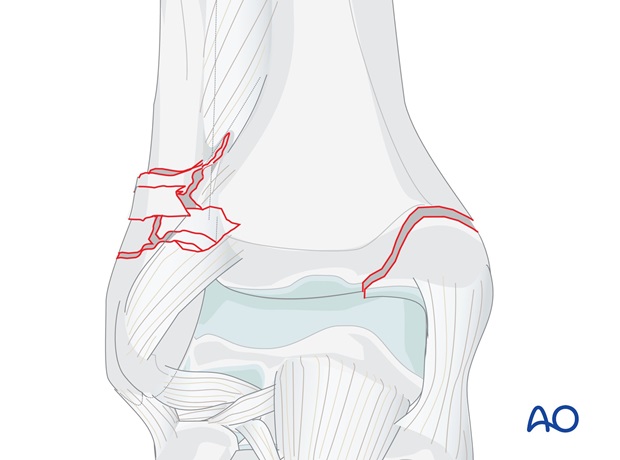
Order of fixation
The choice of fixing the medial or lateral side first may be dictated by the surgeon's preference. If there is significant comminution on the lateral side, the fibula must be brought out to length and the lateral malleolus returned to its anatomic position.For this reason, some surgeons prefer to fix this side first. As the medial fracture is the simpler, some surgeons prefer to fix this first.
Choice of implant – Lateral fixation
As this is a multifragmentary fracture a bridging plate is the most appropriate method of fixation.
Anatomic plates are available, and their lower profile may reduce postoperative discomfort due to prominent hardware. As these plates use locking screws, they may provide more secure fixation in osteoporotic bone.
Choice of implant – Medial fixation
Medial malleolar fractures are usually fixed with lag screws. If the fragment is too small, K-wires and cerclage compression wiring may be better.
Note: “Cerclage compression wiring” was referred to as “Tension band wiring”. We now prefer the term “Cerclage compression wiring” because the tension band mechanism cannot be applied consistently to each component of the fracture fixation. An explanation of the limits of the Tension band mechanism/principle can be found here.
2. Patient preparation and approaches
Patient preparation
Depending on the approach, the patient may be placed in the following positions:
Note on approaches
The two following approaches are used:
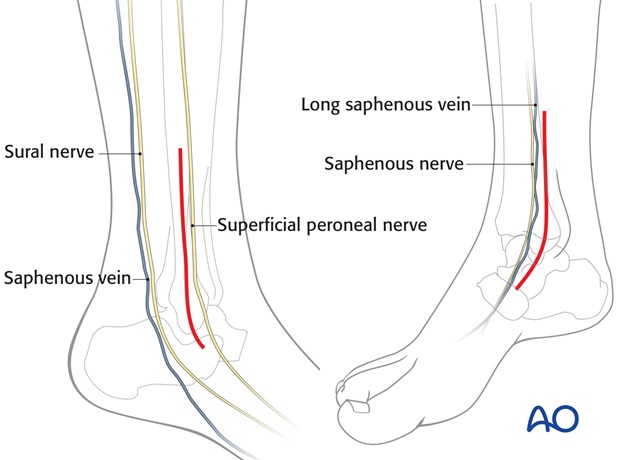
3. Fixation
Medial fixation
Most medial fractures are fixed with lag screws, which should be inserted perpendicular to the plane of the fracture.
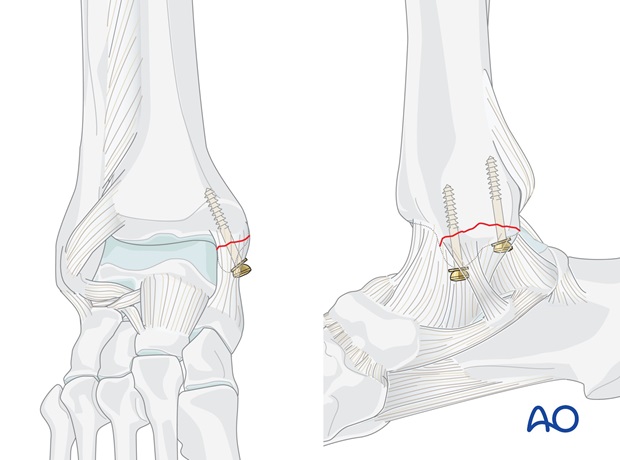
If the fragment is too small or in poor quality bone, K-wires and cerclage compression wiring may be better.
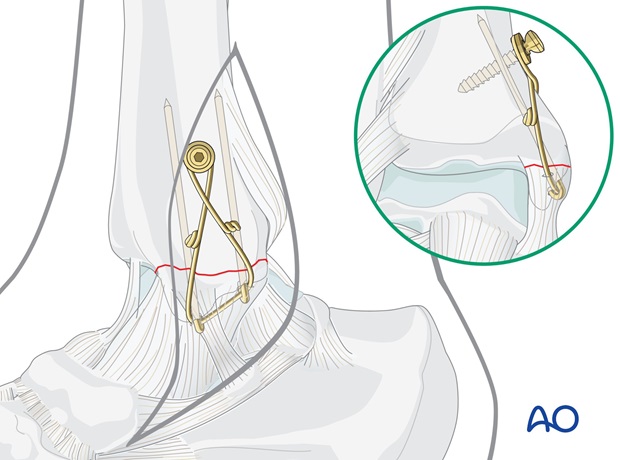
Lateral fixation
If the lateral side is comminuted, these fractures are best fixed with a bridging plate and relative stability.
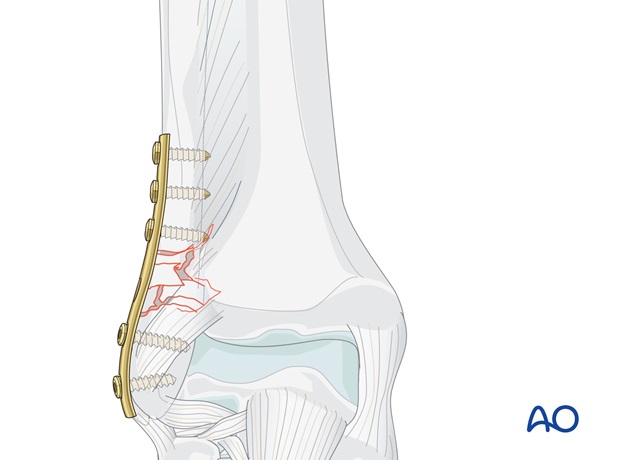
4. Check of osteosynthesis
Check the completed osteosynthesis by image intensification.
Make sure the intra articular components of the fracture have been anatomically reduced.
Make sure none of the screws are entering the joint as shown in the X-ray. This needs to be confirmed in multiple planes.
5. Postoperative treatment of infra- and trans-syndesmotic malleolar fractures
A bulky compression dressing and a lower leg backslab, or a splint, are applied, and the limb is kept elevated for the first 24 hours or so, in order to avoid swelling and to decrease pain.
In anatomically reconstructed, stable malleolar fractures, early active exercises and light partial weight bearing are encouraged after day one. In osteoporotic bone, weight bearing should be postponed.
X-ray evaluation is made after 1 week and then monthly until full healing has occurred. Progressive weight bearing is recommended as tolerated.












